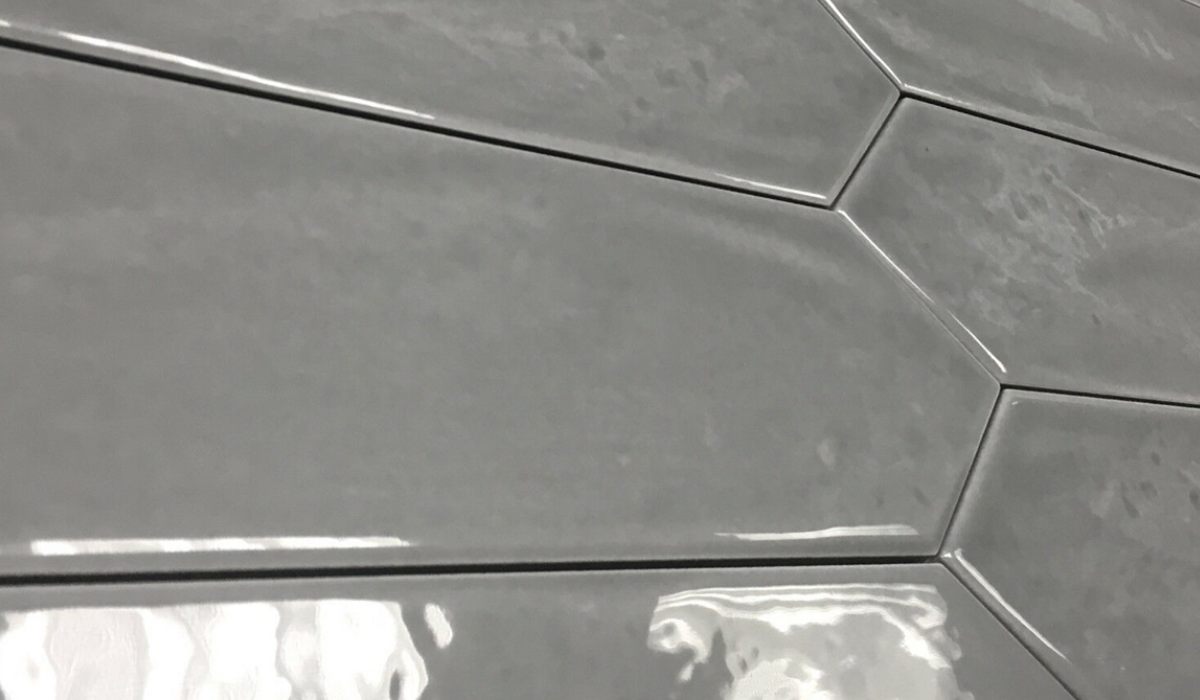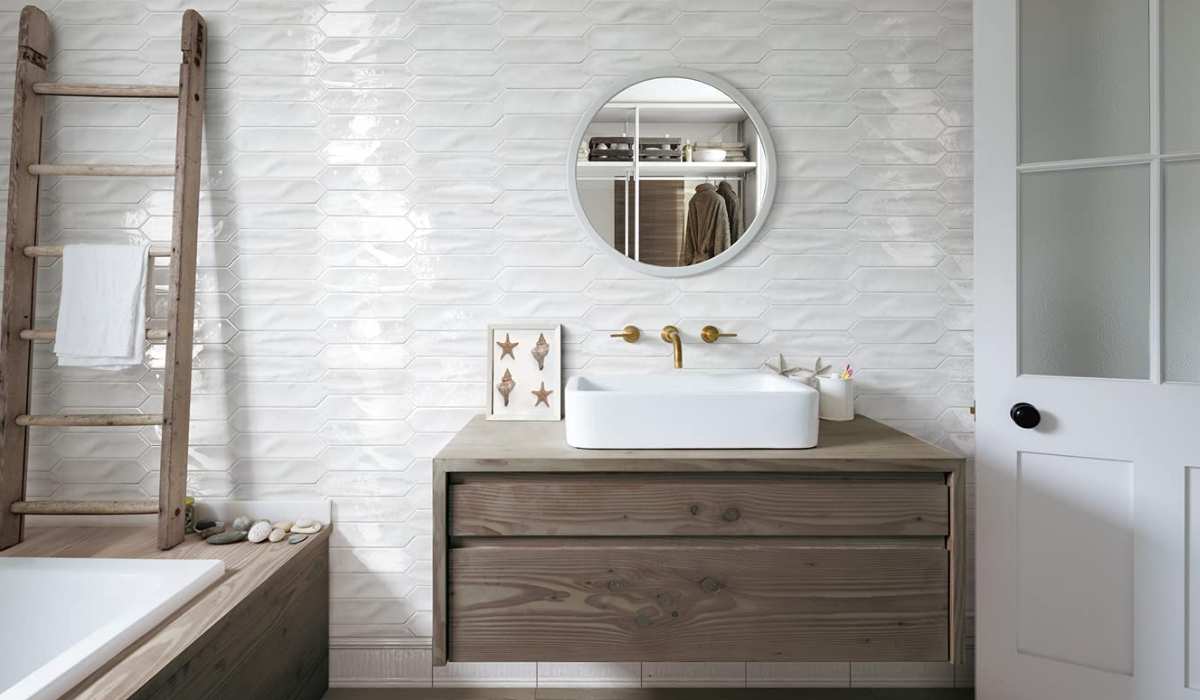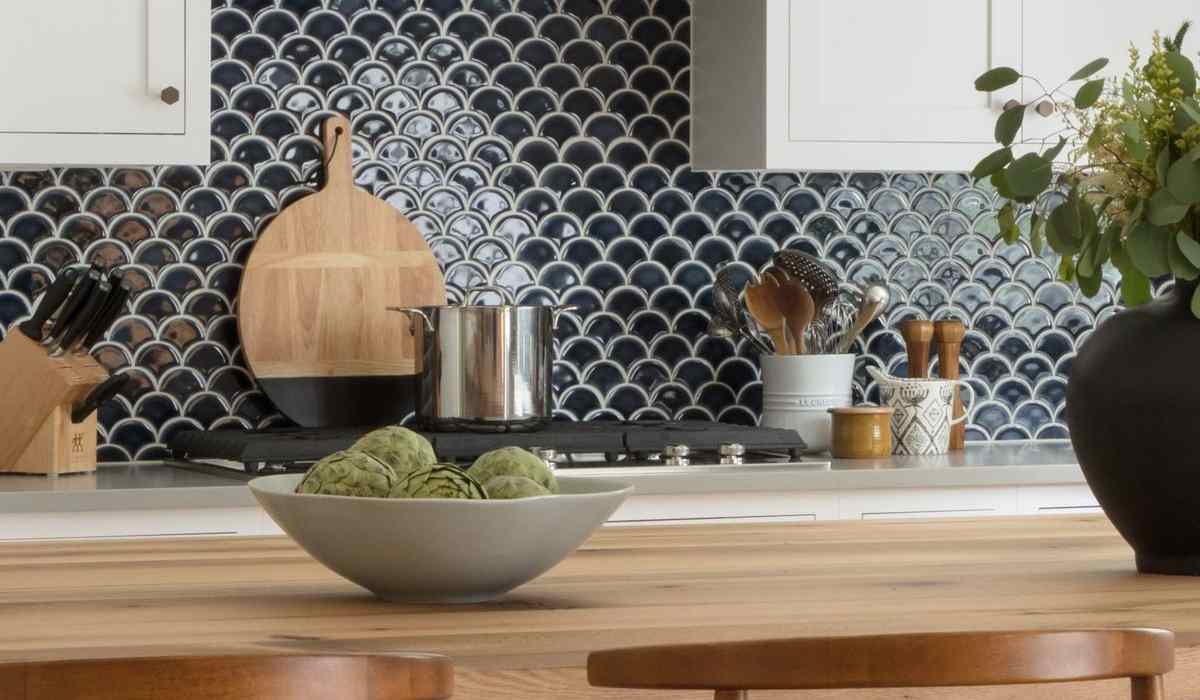Simply said, glazed ceramic tiles have a surface that is smooth and shiny because liquid glass is added to the clay body during the manufacturing process vs unglazed ceramic tiles, as their name indicates, are not glazed; instead, they often have muted colors that are either solid or speckled, and they do not shine. Ceramics that have not been glazed and ceramics that have been glazed both have numerous advantages to offer, both practically and aesthetically. The raw earthiness that unglazed ceramics provide is appealing to some individuals, while others like the sparkling cleanliness that glazed ceramics provide. Whichever alternative is the better one to go with will be determined, in large part, by the specific requirements and preferences of the individual. Continue reading in order to find out if it is better for you to purchase unglazed or glazed ceramics. Ceramics with a glaze A ceramic glaze is a very thin coating of substance that is given to the surface of a porcelain or ceramic item in order to provide it with an additional layer of protection. Glazes are often applied with a brush, or sprayer or are dipped carefully into the glaze depending on the ceramic itself. Glazes may be manufactured from a range of materials, including ash, feldspathic, lead, salt, or tin, and they are typically used to decorate ceramics. They are able to come in a variety of finishes, including the gloss that we are all familiar with, as well as semi-gloss, matt, and satin. Before a piece of pottery can be glazed, it must first be fired, a process that is referred to as the glost firing. Next, an overglaze design must be added, and the item must be fired once more to set the glaze permanently. Glazed ceramics are the most prevalent kind of ceramic tile, and they are a versatile option that may be used for various flooring and utilitarian applications. Because of the non-porous and slip-resistant surfaces that can be applied to the glaze, glazed ceramics are also great options for use in commercial settings, as well as in outdoor areas and areas that are prone to moisture. Ceramics without a glaze Unglazed ceramics are simply the term used to refer to ceramic materials that do not have a coating or "glaze" applied to them.
Glazes are often applied with a brush, or sprayer or are dipped carefully into the glaze depending on the ceramic itself. Glazes may be manufactured from a range of materials, including ash, feldspathic, lead, salt, or tin, and they are typically used to decorate ceramics. They are able to come in a variety of finishes, including the gloss that we are all familiar with, as well as semi-gloss, matt, and satin. Before a piece of pottery can be glazed, it must first be fired, a process that is referred to as the glost firing. Next, an overglaze design must be added, and the item must be fired once more to set the glaze permanently. Glazed ceramics are the most prevalent kind of ceramic tile, and they are a versatile option that may be used for various flooring and utilitarian applications. Because of the non-porous and slip-resistant surfaces that can be applied to the glaze, glazed ceramics are also great options for use in commercial settings, as well as in outdoor areas and areas that are prone to moisture. Ceramics without a glaze Unglazed ceramics are simply the term used to refer to ceramic materials that do not have a coating or "glaze" applied to them. This results in the surface of the ceramic object having the same colour as the body when the glaze is not applied. The majority of unglazed items now available on the market are made of high-quality porcelain and are burned until they reach a vitrified (glass-like) condition, which makes their surfaces almost as impermeable as glazed tiles. Because they are better able to conceal imperfections and chips than glazed ceramics are, unglazed ceramics are often used for commercial applications. Tiles used in commercial applications are often subjected to significant foot traffic, which leads to increased wear and tears on the ceramic tiles. Because the body of unglazed tiles is identical to the face of the tile, it is less obvious if the face of the tile becomes damaged or worn over time. Because scratches and defects are less noticeable on unglazed tiles, there is less of a pressing need to maintain them, which results in a reduction in the expenditures associated with maintenance. Glazed ceramic components, such as bathroom sinks or vanity sets, are the most typical form in which they are offered for sale; nevertheless, unglazed ceramic tiles are also available for use in utilitarian applications. Unglazed ceramic tiles for vanity sets need to have vitrified properties or a combination or composition that is very close to glazed ceramic tiles for a sink in order for the tiles to work as well as glazed ceramic tiles do or even better.
This results in the surface of the ceramic object having the same colour as the body when the glaze is not applied. The majority of unglazed items now available on the market are made of high-quality porcelain and are burned until they reach a vitrified (glass-like) condition, which makes their surfaces almost as impermeable as glazed tiles. Because they are better able to conceal imperfections and chips than glazed ceramics are, unglazed ceramics are often used for commercial applications. Tiles used in commercial applications are often subjected to significant foot traffic, which leads to increased wear and tears on the ceramic tiles. Because the body of unglazed tiles is identical to the face of the tile, it is less obvious if the face of the tile becomes damaged or worn over time. Because scratches and defects are less noticeable on unglazed tiles, there is less of a pressing need to maintain them, which results in a reduction in the expenditures associated with maintenance. Glazed ceramic components, such as bathroom sinks or vanity sets, are the most typical form in which they are offered for sale; nevertheless, unglazed ceramic tiles are also available for use in utilitarian applications. Unglazed ceramic tiles for vanity sets need to have vitrified properties or a combination or composition that is very close to glazed ceramic tiles for a sink in order for the tiles to work as well as glazed ceramic tiles do or even better. Bathrooms When deciding whether to install glazed or unglazed ceramic tiles in your bathroom, one of the most crucial factors to consider is how easily the tiles can be cleaned. Customers' go-to option, by far, is glazed ceramic tile for their flooring and wall coverings. Because they are durable, simple to clean and come in such a wide variety of designs, they are perfect for use on the walls as well as the floors. These days, producers can print pictures onto the glazed ceramic tiles, enabling them to provide an extremely diverse range of designs and vivid color options. The inkjet printer is a remarkable piece of technology that enables us to print high-resolution graphics and patterns on various materials digitally. Many people decide to utilize inkjet printing because it can simulate a wide variety of surface textures, including marble, granite, and limestone. The end product is really remarkable, to the point that it is difficult to tell apart from the source material. It is essential to consider that the Australian NDIS calls for a non-slip standard to be applied to the flooring of all of their bathrooms to protect both the caretaker and the person receiving care. Ceramics that have not been glazed are often utilised because they provide a wider variety of non-slip alternatives. Glazed ceramic tiles are quickly becoming the standard in the non-slip category, despite the fact that non-glazed ceramic tiles have been the standard for a very long time.
Bathrooms When deciding whether to install glazed or unglazed ceramic tiles in your bathroom, one of the most crucial factors to consider is how easily the tiles can be cleaned. Customers' go-to option, by far, is glazed ceramic tile for their flooring and wall coverings. Because they are durable, simple to clean and come in such a wide variety of designs, they are perfect for use on the walls as well as the floors. These days, producers can print pictures onto the glazed ceramic tiles, enabling them to provide an extremely diverse range of designs and vivid color options. The inkjet printer is a remarkable piece of technology that enables us to print high-resolution graphics and patterns on various materials digitally. Many people decide to utilize inkjet printing because it can simulate a wide variety of surface textures, including marble, granite, and limestone. The end product is really remarkable, to the point that it is difficult to tell apart from the source material. It is essential to consider that the Australian NDIS calls for a non-slip standard to be applied to the flooring of all of their bathrooms to protect both the caretaker and the person receiving care. Ceramics that have not been glazed are often utilised because they provide a wider variety of non-slip alternatives. Glazed ceramic tiles are quickly becoming the standard in the non-slip category, despite the fact that non-glazed ceramic tiles have been the standard for a very long time.  In the past, non-slip properties were achieved by incorporating sand into the glaze, which produced a surface that was unpleasant to the touch (like sandpaper). Glazed tiles may now be certified for compliance with a significant number of the non-slip standards because of advancements in multi-layered glazing processes and improved glaze chemistry. Nevertheless, not all glazed ceramics are up to par with the requirements. Because of the relief patterns on the tiles that are used to manufacture higher anti-slip ceramic tiles, the higher slip ratings are still only available in un-glazed ceramic tiles (i.e., diamond and rock finish). It is usually a great idea to double verify the slip-resistant grade that is necessary for the area, especially regarding bathrooms, regardless of whether they are used for domestic or commercial reasons. After reaching this point, you will be able to choose the tile that is the most suitable for the needs you have. If you need help, please consult with our staff. Kitchens When selecting tiles for your kitchen, it is essential, just as it is when selecting tiles for your bathrooms, to take into consideration the needed slip ratings for the area. The slip rating criteria are subject to alteration depending on whether the surface is intended for a commercial environment or a private home kitchen. Unglazed vitrified porcelain tiles are one of the most popular and best alternatives for the flooring of commercial kitchens. These tiles have good slip ratings and are one of the most common and finest choices. These tiles often come with a matching coving,' which ensures that the requirements outlined in the Australian standards are satisfied.
In the past, non-slip properties were achieved by incorporating sand into the glaze, which produced a surface that was unpleasant to the touch (like sandpaper). Glazed tiles may now be certified for compliance with a significant number of the non-slip standards because of advancements in multi-layered glazing processes and improved glaze chemistry. Nevertheless, not all glazed ceramics are up to par with the requirements. Because of the relief patterns on the tiles that are used to manufacture higher anti-slip ceramic tiles, the higher slip ratings are still only available in un-glazed ceramic tiles (i.e., diamond and rock finish). It is usually a great idea to double verify the slip-resistant grade that is necessary for the area, especially regarding bathrooms, regardless of whether they are used for domestic or commercial reasons. After reaching this point, you will be able to choose the tile that is the most suitable for the needs you have. If you need help, please consult with our staff. Kitchens When selecting tiles for your kitchen, it is essential, just as it is when selecting tiles for your bathrooms, to take into consideration the needed slip ratings for the area. The slip rating criteria are subject to alteration depending on whether the surface is intended for a commercial environment or a private home kitchen. Unglazed vitrified porcelain tiles are one of the most popular and best alternatives for the flooring of commercial kitchens. These tiles have good slip ratings and are one of the most common and finest choices. These tiles often come with a matching coving,' which ensures that the requirements outlined in the Australian standards are satisfied.  The relief pattern on these tiles is sometimes a specialized design that is intended to lift users slightly above any oil or wetness that could be present on the floor and cause them to be at risk of slipping and falling. When it comes to ceramic tiles for residential kitchens, unglazed vitrified tiles are a radical alternative that, in most situations, is unneeded. Glazed tiles are the most popular option when it comes to residential applications. Glazed tiles now available on the market are more cost-effective and come in a greater choice of options, both of which are features that homeowners will find extremely attractive. Home construction projects often prioritize image clarity, variety, and color brightness. Glazed ceramic tiles are a particularly appealing option since they are aesthetically pleasing, which is a priority for most home improvement projects. Many people instinctively avoid commercial-quality unglazed vitrified ceramics as soon as they see them because of their less sophisticated look.
The relief pattern on these tiles is sometimes a specialized design that is intended to lift users slightly above any oil or wetness that could be present on the floor and cause them to be at risk of slipping and falling. When it comes to ceramic tiles for residential kitchens, unglazed vitrified tiles are a radical alternative that, in most situations, is unneeded. Glazed tiles are the most popular option when it comes to residential applications. Glazed tiles now available on the market are more cost-effective and come in a greater choice of options, both of which are features that homeowners will find extremely attractive. Home construction projects often prioritize image clarity, variety, and color brightness. Glazed ceramic tiles are a particularly appealing option since they are aesthetically pleasing, which is a priority for most home improvement projects. Many people instinctively avoid commercial-quality unglazed vitrified ceramics as soon as they see them because of their less sophisticated look.
💰 Tenfold your income 💎
